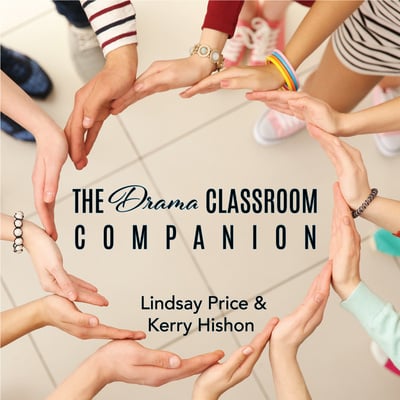Tips for Improving Pacing Issues
We recently discussed how to help students who are rushing their lines and movements. Now we’re solving the opposite problem: what to do when the scenes are dragging and putting the audience to sleep. Let’s look at four common pacing issues and some tips for improving the flow of the scene.
1. Issue: Preparedness (or lack thereof)
Pacing issues are frequently the result of students being unprepared. If students don’t know their lines, struggle to remember their cues, miss their entrances or exits, or mess up their transitions, the pacing of the scene will slow right down.
If this is the reason for your pacing issues, go back to the basics. Review lines and cues, and encourage students to keep practicing and reviewing at home. Do Italian line runs, where students say their lines as quickly and accurately as possible with no blocking. (Check out the giveaway below for tips for success when doing an Italian line run, a great line check exercise.) Have students write down their entrances, exits, transitions, and any other notes that they need in their scripts. Post a running list backstage to help students remember what they’re supposed to do and when.
If students are consistently missing entrances and exits due to goofing around or being distracted, consider adding a backstage supervisor to monitor things like cell phone use and behaviour. They can also be an extra set of hands for quick costume changes and the like.
2. Issue: Stilted conversations and awkward pauses
Two common beginning actor problems are students going all in on their lines and then checking out once their lines are completed, and not listening to their scene partners in general. This can result in stilted, unnatural-sounding scenes with pauses at weird times.
If available, show your students professional video clips of the scenes they’re working on and have them observe how the actors make the lines sound natural and conversational, rather than presentational. Try observing each other having regular conversations, noting things like breathing, pausing, jumping in, cutting each other off, and other nuances. Have students work on active listening exercises. Are they truly listening, or just hearing? Remind your students that they’ll make themselves look good by making their scene partner look good.
And make sure students use dramatic pauses sparingly — too many and they lose their effectiveness. Check out this video all about controlling pauses.
3. Issue: Long transitions and scene changes
Scene changes and transitions need to be quick and precise. Audiences don’t want to sit in the dark or stare at the closed curtain while stagehands struggle to change the scenery. It takes them out of the story and ruins the mood.
Allot some rehearsal time for your stagehands to practice completing scene changes. If they’re really lagging, time them with a stopwatch and have them sit and wait the same length of time. It can be very eye opening! If your students like competitions, challenge them to reduce their speed at the next run, while maintaining calm and accuracy.
If the stagehands physically cannot complete their transitions quickly enough, consider adding more students to assist (actors can help) or reducing the amount of scenery, furniture, and props they need to change. You also might try adding music to the transitions or adding some transition scenes in the very downstage area of the stage to mask the set changes occurring behind and give the audience something interesting to watch.
4. Issue: Too much “stuff”
Then, we have the opposite problem. In an effort to keep our students engaged and active onstage, directors will often try to add more, more, more: more ensemble members to every scene, more costume changes, more furniture and props, more grandiose blocking and choreography. This unfortunately may result in longer transitions, more traffic jams getting on and offstage, more stress backstage, and — you guessed it — pacing issues.
Sometimes, less is more. Where can you simplify things? Where can you reduce? Do you really need two different couches for the two living room scenes, or can you reposition the same couch and toss a throw blanket over it from scene to scene? Can you condense the number of costume changes? Sometimes adding or removing a jacket or hat is all you need. Do all seven reporter ensemble characters need a camera, notepad and prop phone? Can you have each actor only hold one item? Do you need all seven reporters onstage in the scene?
Remember** :** Changes to the script (line edits, scene cuts, etc.) must only be done with the permission of the playwright, regardless of any issues, pacing, or otherwise.
Related Articles
The Drama Classroom Companion
by Lindsay Price & Kerry Hishon
The Drama Classroom Companion is filled with articles and exercises to build the skills needed for theatrical performance as well as real world skills like creative thinking, critical thinking, collaboration, and communication.
The Rehearsal Companion
by Kerry Hishon
You’ve chosen the play, paid the royalties, done the script analysis, held your auditions, and cast the show. Tomorrow is the first rehearsal. Are you ready? Really ready? The Rehearsal Companion can help!





